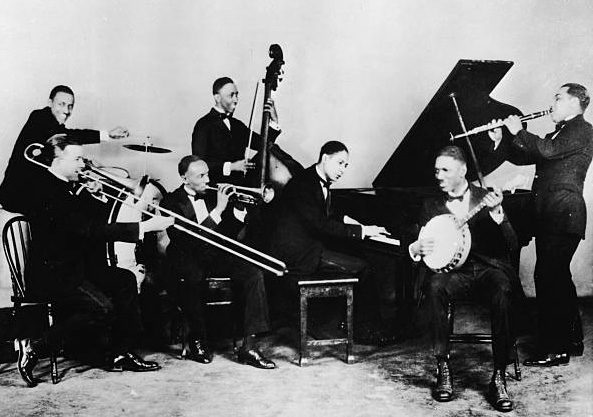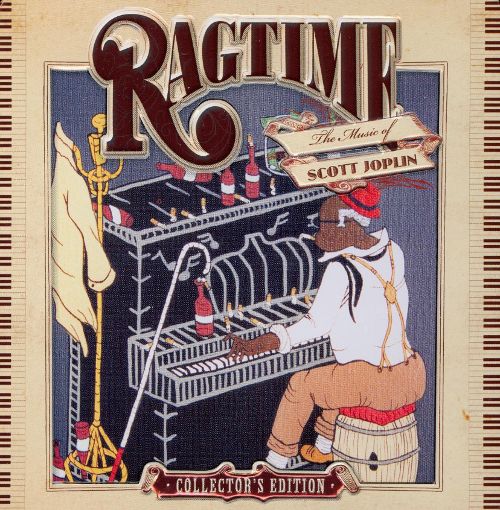Overview and Thesis
Ragtime (originating in the 1890s) is commonly regarded as the first all-American genre of music. Pioneered by the likes of Scott Joplin, Eubie Blake, and other talented African American composers and performers, ragtime brought traditionally black musical practices to the ruling white class. The genre was rife with black intellect; an understanding of syncopation, the shared experiences among black people, and a knowledge of classical western music came together to create something that much of America could not have fathomed at the time. Like other aspects of African American life and creativity, Ragtime would eventually be replicated by outside groups and integrated into “American” society.
In its creation and subsequent recognition, ragtime is a lot like collard greens. Collard greens originally came to the Americas during the trans-Atlantic slave trade (Davis, 2018). The collard had fallen out of favor with Brits in favor of the cabbage, but West Africans living in the Americas appreciated it for its nutritional value in the face of otherwise certain malnutrition under slavery. Today, collard greens are understood by many as simply a part of a non-racialized Southern culture. In fact, a simple Google search of its origins may prompt a suggestion for an alternative question: “Why Do Southerners eat collard greens?” Like many things in American culture, including collard greens, ragtime could not have existed without African Americans and their cultural influence. Realistically, African influence is what gave ragtime its title as the first uniquely American genre of music.

Ragtime Revolution
Firstly, and most notably, ragtime revolutionized American music by introducing the element of syncopation. Syncopation has been a part of African musical tradition for as long as history has recorded. For example, it can be found in the foundational ring shout rhythm used during celebrational and spiritual ceremonies in West Africa. Classical western music had no such syncopation. The emphasis always, as expected, landed on the first and third beats of each measure in European-American music. Scott Joplin’s songs, such as “The Maple Leaf Rag,” featured syncopation that whites had never seen before, but played on an instrument they were familiar with. This crossover between African rhythms and European piano created an African-American sound that resonated with white Americans as well. The Maple Leaf Rag was, after all, the first record to sell over a million copies.
Joplin’s other ragtime works also reflected a Black consciousness that was central to the genre. For example, Treemonisha (1911), was a ragtime opera that contributed to the ongoing racial uplift movement of the time by emphasizing the importance of education for the enlightenment of black people. The titular protagonist is a black teenager educated by a white person, which is also the case for Joplin. Such strongly racial themes were likely a form of protest to the imitations of ragtime performed by whites, who would “rag the classics” by syncopating pre-existing pieces. To Joplin, ragtime was not ever just about the blackness of the sound. The themes and creativity behind the music was also uniquely black, and works like Treemonisha were created to reiterate that point. Ragtime could not have been created by whites who enjoyed syncopation; the most they could do is imitate black influences.
Ragtime is not the only genre to be imitated by whites and absorbed into “general American music” status. Jazz and country are both genres created to express black struggle and creativity that have been all but removed from their origin as black genres. Jazz is often introduced to music scholars as “America’s original art form, the baseball of music.” (Napier, 2011) Ironically, this allegory compares a genre created by black musicians to a sport that excluded and segregated Blacks until the 1960s. Jimmie Rogers, the father is country music, created the genre by combining blues, gospel, jazz, cowboy, and folk styles in his songs (Burns, 2021). However, the country music industry today is dominated by white performers.
Ragtime, collard greens, and other cultural pleasures of black creation have all been integrated into the American melting-pot, despite the fact that they were not created by a unified American effort. These things could not have existed without African Americans, and they would nolt have existed if there were no racial hierarchy that forced Blacks to create their own culture. Collard greens were grown from the threat of starvation during enslavement, and ragtime was meant to bring about a niche genre of music that was made by and for the negro. Though these things have been picked up by non-black people worldwide, it does not negate their status as originally black creations.

Sources Cited
Edward H. Davis, January 25, 2018. “The Humble but Hardy Leaf That Defines Our National Character: Essay.” Zócalo Public Square, 9 Mar. 2018, https://www.zocalopublicsquare.org/2018/01/25/humble-hardy-leaf-defines-national-character/ideas/essay/.
Burns, Ken. “African American Roots and Influences in Country Music: Country Music.” PBS LearningMedia, Ken Burns: Country Music, 15 Feb. 2021, https://gpb.pbslearningmedia.org/resource/african-american-roots-influences-video-gallery/ken-burns-country-music/.
Napier, Christina. “Jazz: America’s Original Art Form.” The Collegian, 30 Nov. 2011, https://collegian.csufresno.edu/2011/11/jazz-america%E2%80%99s-original-art-form/#:~:text=Unknown%20to%20some%2C%20jazz%20is,Jazz%20Orchestra%20and%20Ensemble%2C%20said.
History. “Hip Hop Is Born at a Birthday Party in the Bronx.” History.com, A&E Television Networks, 16 Nov. 2009, https://www.history.com/this-day-in-history/hip-hop-is-born-at-a-birthday-party-in-the-bronx#:~:text=Like%20any%20style%20of%20music,west%20Bronx%2C%20New%20York%20City.


